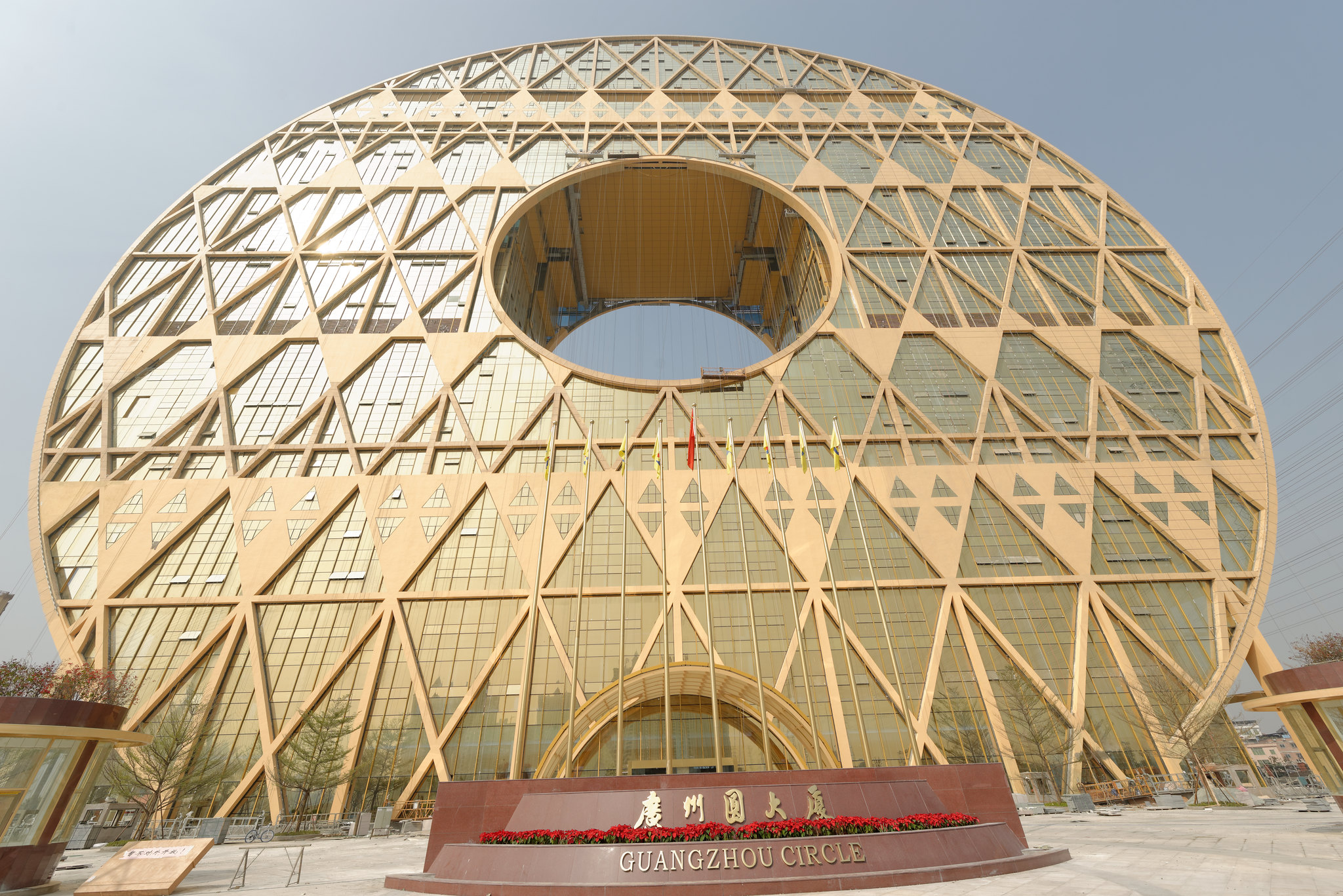The Guangzhou Circle, a striking architectural marvel in the heart of Guangzhou, China, stands as a testament to the city’s rich cultural heritage and its ambitious vision for the future. This iconic structure, designed by Italian architect Joseph di Pasquale, has captivated the imagination of locals and visitors alike since its completion in 2013. But beyond its eye-catching circular design, the building is steeped in symbolism that reflects the deep-rooted traditions and values of Chinese culture.
At first glance, the Guangzhou Circle appears to be a simple, yet bold geometric shape rising 138 meters into the sky. However, a closer look reveals a complex interplay of cultural references and modern architectural techniques. The building’s most prominent feature is its circular form, which draws inspiration from the ancient Chinese jade discs known as “bi.” These artifacts, dating back thousands of years, were believed to represent the heavens and were often used in religious and ceremonial practices.
By incorporating this ancient symbol into a contemporary structure, the architects have created a powerful link between Guangzhou’s past and present. The circular shape also evokes the concept of unity and wholeness, which is deeply ingrained in Chinese philosophy. This symbolism is particularly fitting for a building that houses the Guangdong Plastic Exchange, an organization that brings together various players in the plastics industry.
But the symbolism doesn’t stop there. When viewed from certain angles, the building’s reflection in the Pearl River creates the illusion of a figure eight – a number considered extremely lucky in Chinese culture. This clever design element not only adds visual interest but also imbues the structure with an aura of good fortune, which is highly valued in Chinese business practices.
The architects have also incorporated feng shui principles into the building’s design. The circular shape is believed to promote positive energy flow, while the building’s location near the water is considered auspicious. These elements combine to create a harmonious environment that is thought to foster success and prosperity for the businesses housed within.
Interestingly, the Guangzhou Circle’s symbolism extends beyond Chinese culture. The building’s shape has drawn comparisons to coin currency, making it a fitting home for financial institutions. Some observers have even likened it to a giant donut or a massive Christmas wreath, showcasing the structure’s ability to evoke different interpretations from various cultural perspectives.
The building’s exterior is clad in glass and aluminum, materials that reflect the city’s skyline and the surrounding landscape. This reflective quality allows the Guangzhou Circle to change its appearance throughout the day, mirroring the dynamic nature of the city itself. At night, the building is illuminated, transforming into a glowing beacon that adds a touch of magic to Guangzhou’s already impressive skyline.
Inside, the Guangzhou Circle continues to impress with its innovative design. The central atrium, which runs the full height of the building, allows natural light to flood the interior spaces. This not only creates a pleasant working environment but also serves as a metaphor for transparency and openness in business dealings.
As Guangzhou continues to grow and evolve, the Guangzhou Circle stands as a powerful symbol of the city’s ambitions and its respect for tradition. It serves as a reminder that even in the face of rapid modernization, there is value in honoring cultural heritage. By seamlessly blending ancient symbolism with cutting-edge architecture, the Guangzhou Circle has become more than just a building – it’s a cultural landmark that encapsulates the spirit of a city poised between its rich past and its promising future.

